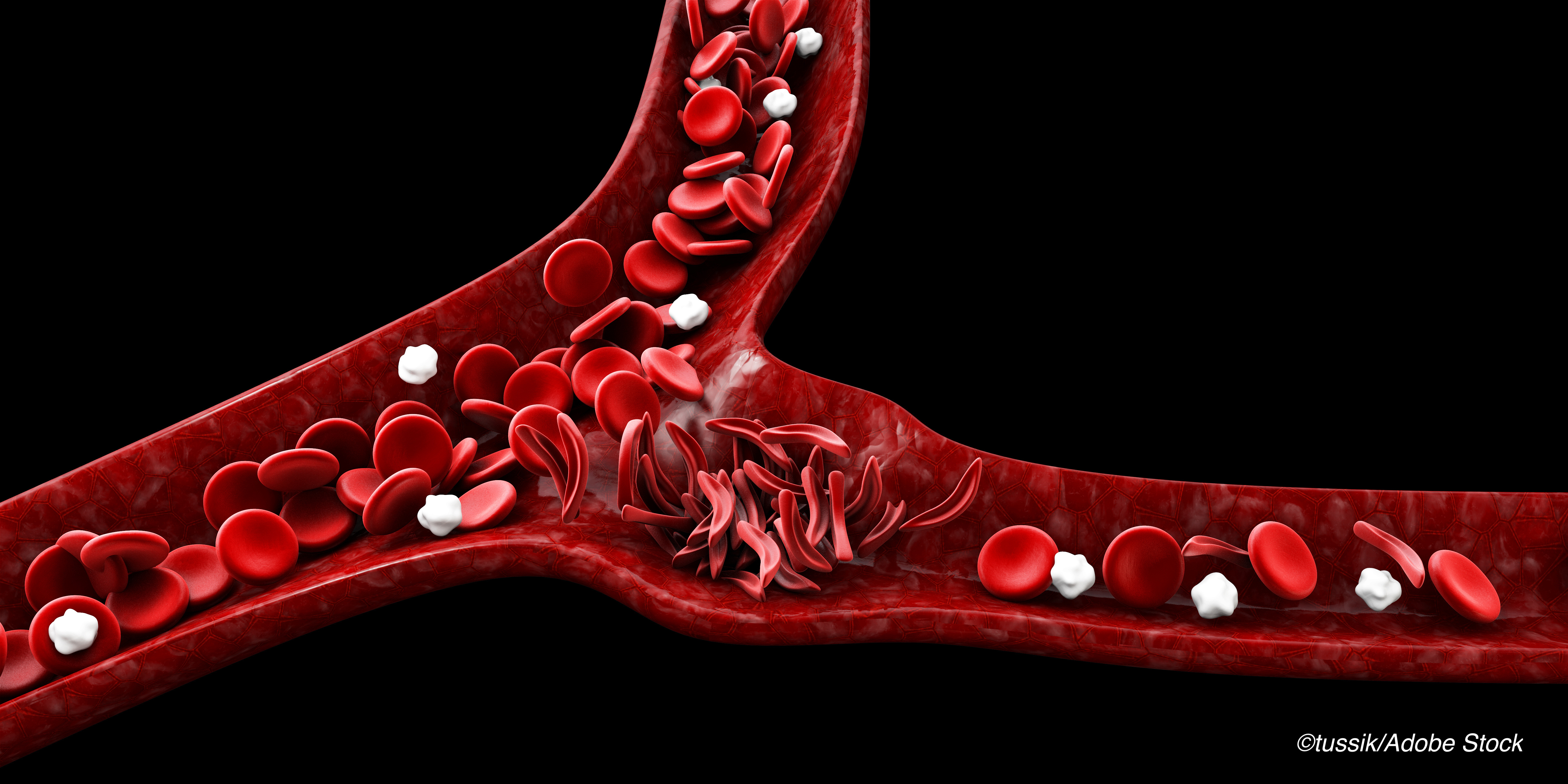
Measures of metabolic stress and brain structural integrity in patients with sickle cell disease (SCD) differed from controls and offered insight into stroke vulnerability, a cross-sectional analysis of prospectively collected MRI data found.
Adults with SCD had increased oxygen extraction fraction (OEF; fraction of oxygen diffusing from blood to tissue) compared with controls (35% versus 25%, respectively, P<0.001), which independently predicted increased worse microstructural integrity in normal-appearing white matter, reported Andria Ford, MD, of Washington University in St. Louis, and co-authors.
“We found that elevated cerebral OEF was independently associated with microstructural impairment in normal-appearing white matter in adults with SCD, but not in healthy controls,” they wrote in Neurology. “Within high OEF regions, we found disruption in white matter microstructure which spatially extended beyond cerebral infarcts.”
“Elevated OEF, a putative index of cerebral oxygen metabolic stress, may provide a metric of ischemic vulnerability which could enable individualization of therapeutic strategies in SCD,” they added.
“In patients with SCD, ischemia can occur due to decreased oxygen-carrying capacity, rather than vessel occlusion, resulting in increased OEF despite increased cerebral blood flow,” noted Richard Leigh, MD, of Johns Hopkins University in Baltimore, and Marie Luby, PhD, of the National Institutes of Health in Bethesda, Maryland, in an accompanying editorial.
“This phenomenon is exacerbated in regions with diminished capacity for compensatory increase in cerebral blood flow such as the watershed zones,” Leigh and Luby wrote. “Thus, the measurement of OEF in patients with SCD, or cerebrovascular disease in general, is an attractive biomarker for understanding the pathogenesis of white matter hyperintensities.”
“The findings of this study both support and expand our understanding of the microstructural mechanism by which vascular white matter hyperintensities develop in patients with SCD,” they added. “Some caution must be taken given that the biomarker used for OEF is novel, not widely available, and needs further validation.”
By age 32, more than half of people with SCD have silent infarcts. Compensatory increases in global cerebral blood flow and OEF in SCD have been established by prior research, but infarcts are most common in watershed vascular territories with low white matter blood flow compared with other regions.
“We have previously shown that elevated watershed OEF is associated with increased infarct density from an independent SCD cohort, suggesting that regional CBF and OEF may represent hemodynamic and oxygen metabolic stress, respectively, and may hold promise as markers of increased stroke risk,” Ford and co-authors noted.
Characterizing early, microstructural change in normal-appearing white matter—free from evident infarcts—may inform efforts at prevention and treatment before white matter hyperintensities and more overt injuries occur.
In this study, Ford and colleagues compared adults with SCD (n=34) and controls without SCD (n=49). Microstructural integrity was evaluated using diffusion tensor imaging measures of mean diffusivity (when increased, this indicates poor structural integrity) and fractional anisotropy (when decreased, this indicates poor structural integrity). Brain metabolic and hemodynamic stress were evaluated with OEF and cerebral blood flow.
The median age of the SCD cohort was 22; median age of controls was 33. Females made up 44% of the SCD cohort and 73% of controls. Both were significantly different, and results were adjusted for age and sex imbalance. All participants were African-American.
The findings showed:
- Increased cerebral blood flow in people with SCD versus controls (50.9 versus 38.8 mL/min/100g, respectively; P<0.001).
- Increased mean diffusivity (worse microstructural integrity) in normal-appearing white matter for people with SCD versus controls (0.76 versus 0.72×10-3mm2 per second, respectively; P=0.005).
- Decreased fractional anisotropy (worse microstructural integrity) in normal-appearing white matter for people with SCD versus controls (0.40 versus 0.42, P=0.021).
- An overlay of maps of infarct density (number of participants with infarct in a given voxel divided by total number of participants) and mean diffusivity showed areas of mean diffusivity elevation in the deep white matter surrounded cerebral infarcts.
Decreased microstructural integrity of normal-appearing white matter remained in the SCD cohort after adjusting for age and sex on multivariable analysis. “The patient- and tissue-based relationships between elevated OEF, elevated MD, and cerebral infarcts suggest that oxygen metabolic stress may underlie microstructural injury prior to the development of cerebral infarcts in SCD,” the researchers noted.
“If confirmed, these results suggest that measuring OEF may bring us one step earlier in the pathway that coverts normal appearing white matter to white matter hyperintensity,” the editorialists observed.
“We now know that changes can be detected in the normal-appearing white matter prior to the development of white matter hyperintensity, including disruption of the blood-brain barrier and loss of microstructural integrity,” they continued. “This raises the concern that white matter hyperintensity may represent a tip-of-the-iceberg scenario in which a true understanding of the pathology lies below the surface.”
Cognitive consequences of SCD, a major cause of disability and loss of independence, were not measured in this study, Ford and co-authors noted. “We have recently started performing full cognitive assessments to prevent this limitation in future studies,” they wrote. The cohorts were imbalanced with respect to age and sex, and the study’s cross-sectional analysis limited the researchers’ ability to assess causality.
-
Measures of metabolic stress and brain structural integrity in patients with sickle cell disease (SCD) differed from controls and offered insight into stroke vulnerability, MRI data showed.
-
Adults with SCD had increased oxygen extraction fraction compared with controls, which independently predicted increased worse microstructural integrity in normal-appearing white matter.
Paul Smyth, MD, Contributing Writer, BreakingMED™
This research was supported by NIH.
Ford had no disclosures.
Leigh and Luby had no disclosures.
Cat ID: 38
Topic ID: 82,38,730,118,38,192


